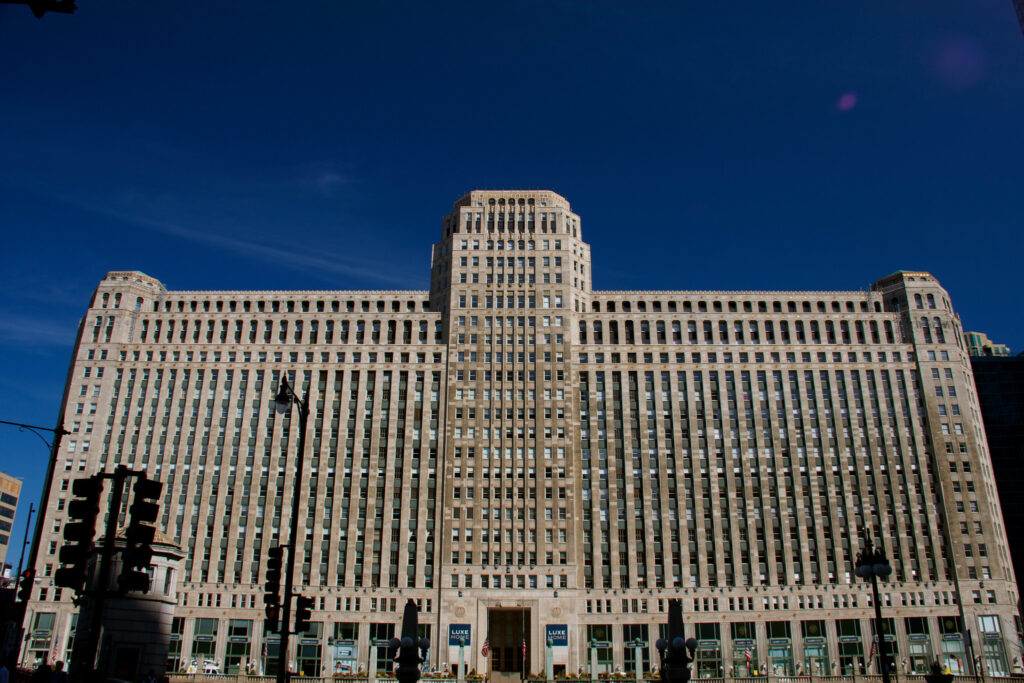In the architecture and built environment industries, there are two major options for building removal: demolition and deconstruction. While demolition is certainly a process many are familiar with, deconstruction is quickly taking over as the more sustainable option for building disassembly. It’s easy to understand why this is happening given the state of the climate and sustainability issues facing the industry:
- The Environmental Protection Agency (EPA) estimated that 600 million tons of C&D waste was generated in the U.S. in 2018, more than twice the total of household waste.
- It’s estimated that 50% of all buildings will be demolished by 2050, and double the building stock of all buildings on the planet is projected by 2060.
- 85% of salvageable building materials end up in landfill.
As such, justification for demolition as the status quo simply doesn’t align with the industry’s focus on driving the shift towards more sustainable forms of building material sourcing, economic growth, urban life, and value creation.
In this guide, we’ll jump into the emergence and environmental and social benefits of deconstruction and how it can be done more effectively.
4 Pillars of Effective Deconstruction
Before diving into more effective deconstruction practices, it’s important to establish what deconstruction is.
Deconstruction definition:
Deconstruction is an alternative to demolition that calls for buildings to be carefully dismantled or disassembled, and for the salvageable components to be sorted for future donation, sale, or reuse & recycling.
Why deconstruction?
Arguments that deconstruction is difficult to implement and too labor-intensive are at the top of the list of why many choose other methods. Material reprocessing and repurposing can be expensive, and finding “takers” for these materials isn’t always easy.
The simplest answer is that the cost to demolish a building can be a major hit to the bottom line. However, when it comes to carbon emissions and protecting resources, deconstruction is the better option when the removal of buildings is necessary. According to Charles Kibbert at the University of Florida, waste from building demolition (partial demolition for renovation, or total demolition for building removal) represents 30-50% of total waste in most industrial countries. To eliminate this waste and reclaim the value of existing building materials, deconstruction should be employed. A deconstruction project, which can divert up to 90 percent of building materials for reuse and recycling, is not only the more sustainable outcome, but it provides a number of socioeconomic benefits as well. Building materials can be made available to the community, providing additional jobs, while supporting the growth and longevity of local reuse retailers.
The question remains, how can deconstruction be implemented effectively?
Key pillars of deconstruction
The conversation around deconstruction ultimately begins before the building is ever removed. There are a number of predetermined steps and post-deconstruction considerations to make before going into an effective project.
1. Supply Enablement
Before deconstruction can occur, the size, scope, and scale of the project needs to be set. Knowing which materials people will want and which are able to be salvaged from the project are key to setting up an effective deconstruction project.
The lead time for a project is also a necessary prerequisite. If a demo contractor is on-site, it’s already too late to determine the reusable building materials. One option to create lead time is reviewing demolition drawings in advance. Another option is providing physical space to allow time for materials to be reclaimed. In lieu of space, increase the number of reuse retailers in the market.
An additional barrier to supply enablement is the lack of integration of reclaimed materials into the Construction Specification Institute (CSI) standards. This system needs to be modernized, and include these salvaged materials into the CSI MasterFormat to improve reuse and other landfill avoidance outcomes.
2. Inventory Management
After properly determining the supply of building materials available, it becomes crucial to manage the inventory in a way that allows for easy access to the different quantities of material.
A resource exchange platform should be utilized to track the inventory and encompassing data associated with the building materials reclaimed through deconstruction. This type of data can also be used to determine effective temporary storage of materials which is often easier than sending these materials to a landfill.
3. Creating demand
What good are salvaged building materials if there are no stakeholders to reclaim them? Create a demand for reclaimed materials by finding local partners who may be able to use them.
Get to know local building owners first. Building owners may need to complete renovations or future construction projects and if the reclaimed materials being offered are of value, they will know to come to you for purchasing.
It’s also beneficial to connect with architecture firms and contractors. Many professionals in this field are shifting to using reclaimed building materials in their construction projects and will be useful partners for the salvaged material.
Finally, transport and storage companies will be invaluable to the success of your deconstruction project. Materials may not be demanded immediately following the deconstruction or may need to be transported in a very specific way to partners. Identify these organizations that will best suit your needs.
4. Impact Tracking
With any major project, a key measure of success is the tracking of impact. While certain quantitative metrics like the weight of salvaged material can show how successful a deconstruction project is, the built environment as a whole needs to turn to “storytelling of materials” in order to scale commercial salvage.
Sustainability is often propped up as a greenwashing technique and has become normalized and popular. The built environment would benefit greatly from tracking the “story” of the product lifecycle of a material. Perhaps buildings sourced from pre-war era materials should also be added to the National Register of Historic Places.
Tracking the impact of deconstruction should be as much qualitative as it is quantitative. Communities that have been historically divested can now find re-investment through salvaged materials, ultimately leading to a better sense of history, sustainability, and beauty for the residents.
Final thoughts
This solution for building removal is becoming increasingly attractive for those working in the built environment. By considering these pillars of effectiveness, your organization can find major success financially and in helping mitigate climate change.
Interested in learning more? Download our guide to Adaptive Reuse in the Built Environment.


